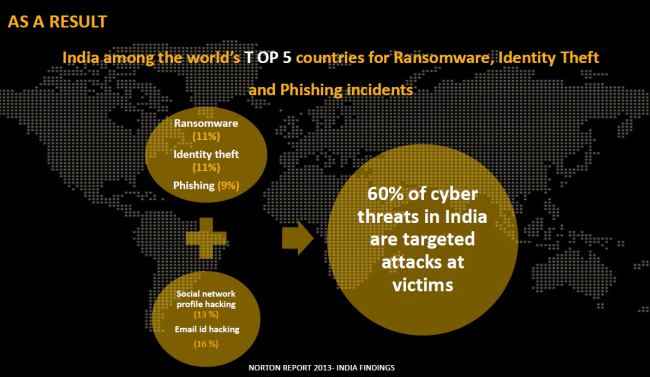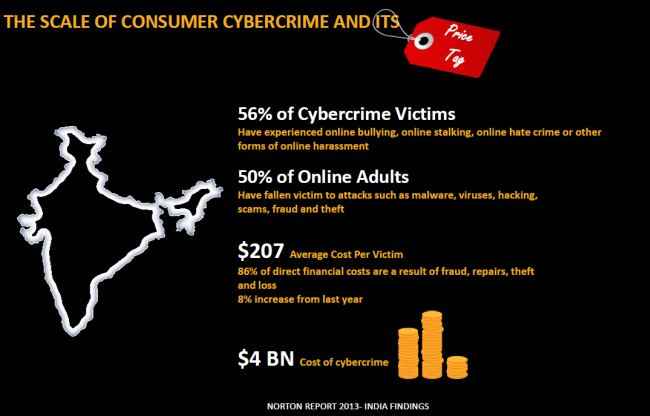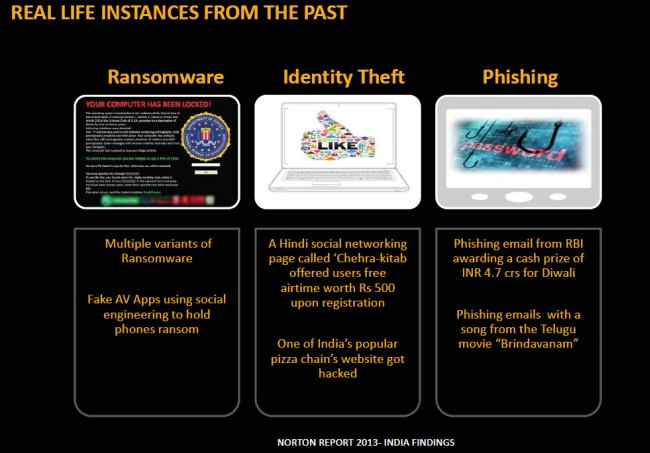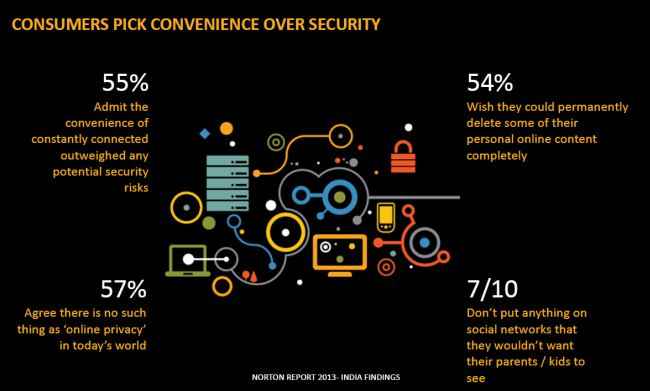India emerges as the ransomware capital of Asia Pacific: 2013 Norton Report
The report Indians are the most impacted by ransomware, identity thef and phishing incidences. Also, average direct cost per cybercrime victim has gone up by 8 percent.

India has emerged as the ransomware capital of Asia Pacific with 11 percent of cybervictims falling to this form of virtual extortion, while average cost per victim has increased by 8 percent from last year. According to Symantec's 2013 Norton Report, India is among top five countries for the highest number of incidences of cybercrime such as ransomware (11 percent), identity theft (11 percent) and phishing (9 percent).
 Survey
Survey“At first glance of the India findings, we were happy to see a significant drop from last year in the total number of victims and total cost of cybercrime, but a closer scrutiny revealed an alarming trend,” says Ritesh Chopra, country manager, Norton by Symantec.
The 2013 Norton Report is based experiences of more than 13,000 adults across 24 countries. The report attempts to understand how cybercrime impacts users, and how the adoption and evolution of new technologies impacts consumers’ security.
“Today’s cybercriminals are using more sophisticated attacks, such as ransomware and spear-phishing, which yield them more money per attack than ever before. With 66 percent of Indian consumers using their personal mobile device for both work and play, this creates entirely new security risks for enterprises as cybercriminals have the potential to access even more valuable information.”

In addition to Ransomware, in the last 12 months, 56 percent of cybercrime victims in India have experienced online bullying, online stalking, online hate crime or other forms of online harassment, says the Norton Report.

The report further highlights emerging threats from smartphones or Internet-enabled phones. It says about 63 percent of smartphone users in India have experienced some form of mobile cybercrime in the past 12 months.

Symantec says several consumers in India are engaging in risky behaviour that involves giving access to their private information, subsequently putting them on risk of becoming victims of cyber crimes.
“A large percentage of Indian Wi-Fi user’s access social networks (61 percent); shop online (44 percent); and access their bank account (42 percent) through a public or unsecure Wi-Fi. Adding to the risk are social network users in India who share their password with others (18 percent), don’t log out of each session (21 percent) and connect with people they don’t know (18 percent),” says the report.

Symantec's study points out that the trend isn't entirely due to lack of awareness. About 55 percent of consumers, covered in the study, have asserted the convenience of being constantly connected outweighs any potential security risks. Even when 57 percent said that there is no such thing as “online privacy” in today’s world and 61 percent assume that “everything they put online will / can be seen by any and every one.

You can read Symantec's 2013 Norton Report at India has emerged as the ransomware capital of Asia Pacific with 11 percent of cybervictims falling to this form of virtual extortion, while average cost per victim has increased by 8 percent from last year. According to Symantec's 2013 Norton Report, India is among top five countries for the highest number of incidences of cybercrime such as ransomware (11 percent), identity theft (11 percent) and phishing (9 percent). “At first glance of the India findings, we were happy to see a significant drop from last year in the total number of victims and total cost of cybercrime, but a closer scrutiny revealed an alarming trend,†says Ritesh Chopra, country manager, Norton by Symantec. The 2013 Norton Report is based experiences of more than 13,000 adults across 24 countries. The report attempts to understand how cybercrime impacts users, and how the adoption and evolution of new technologies impacts consumers’ security. “Today’s cybercriminals are using more sophisticated attacks, such as ransomware and spear-phishing, which yield them more money per attack than ever before. With 66 percent of Indian consumers using their personal mobile device for both work and play, this creates entirely new security risks for enterprises as cybercriminals have the potential to access even more valuable information.†In addition to Ransomware, in the last 12 months, 56 percent of cybercrime victims in India have experienced online bullying, online stalking, online hate crime or other forms of online harassment, says the Norton Report. The report further highlights emerging threats from smartphones or Internet-enabled phones. It says about 63 percent of smartphone users in India have experienced some form of mobile cybercrime in the past 12 months. Symantec says several consumers in India are engaging in risky behaviour that involves giving access to their private information, subsequently putting them on risk of becoming victims of cyber crimes. “A large percentage of Indian Wi-Fi user’s access social networks (61 percent); shop online (44 percent); and access their bank account (42 percent) through a public or unsecure Wi-Fi. Adding to the risk are social network users in India who share their password with others (18 percent), don’t log out of each session (21 percent) and connect with people they don’t know (18 percent),†says the report. Symantec's study points out that the trend isn't entirely due to lack of awareness. About 55 percent of consumers, covered in the study, have asserted the convenience of being constantly connected outweighs any potential security risks. Even when 57 percent said that there is no such thing as “online privacy†in today’s world and 61 percent assume that “everything they put online will / can be seen by any and every one. You can read Symantec's 2013 Norton Report at go.symantec.com/norton-report-2013.